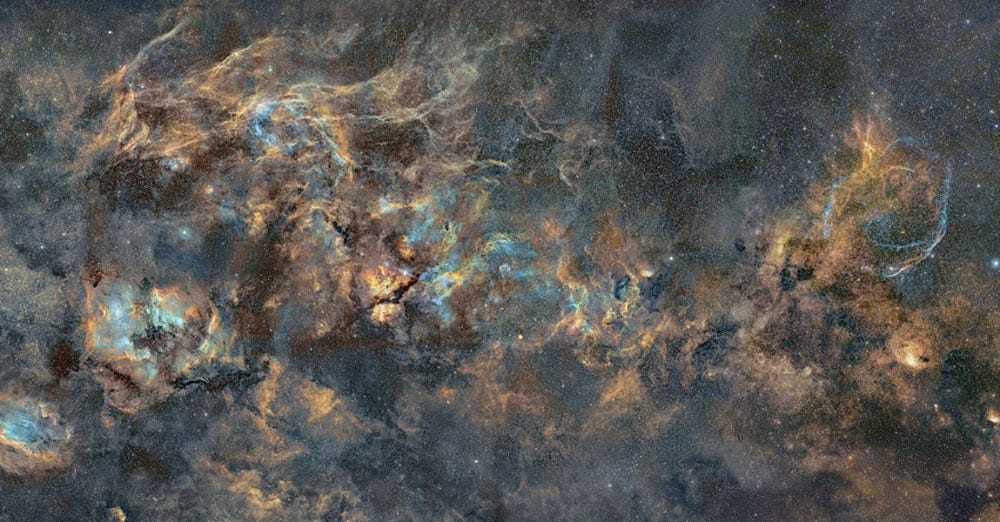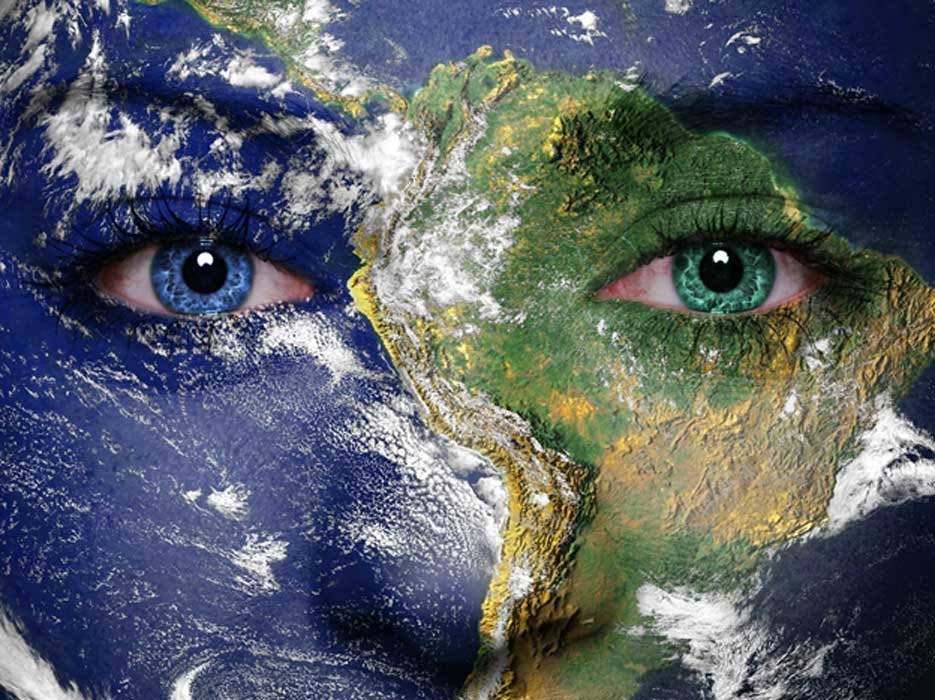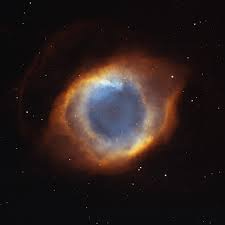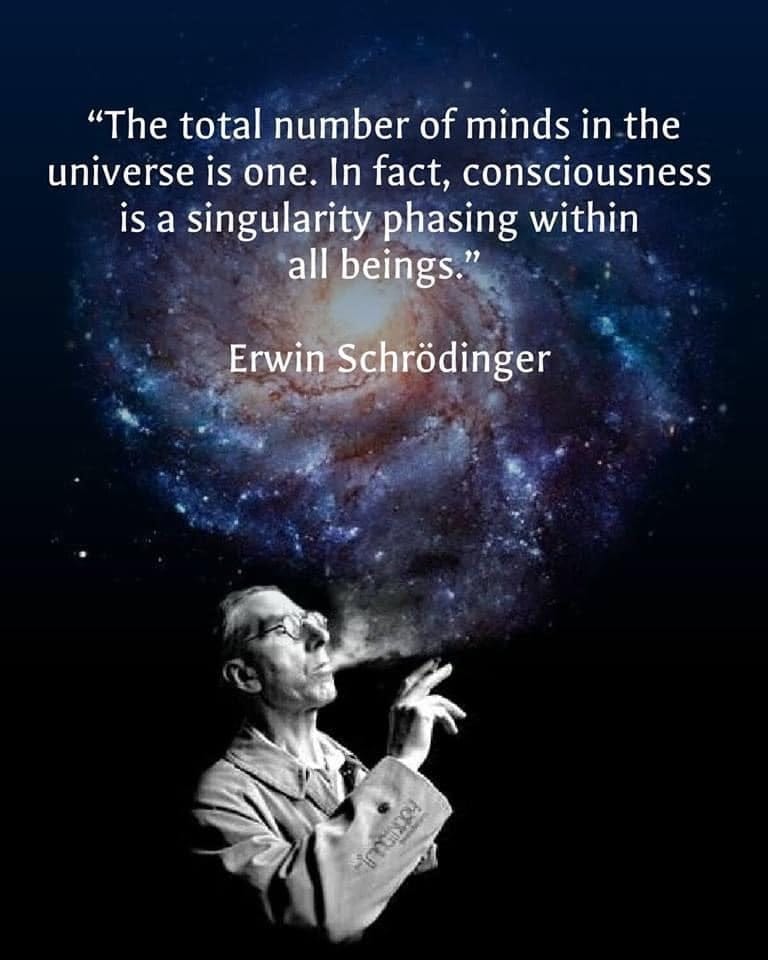Is Everything Conscious? Or is Consciousness Everything?
The view of reality demanded by quantum physics challenges the validity of the Cartesian separation of mind (subject) and material world (object), and therefor of self and other.
Ralph Waldo Emerson was, in my mind, America’s greatest thinker. I’d love to pick him up at some point along the Great American Highway, but for present purposes I want to just cite his maxim that “a foolish consistency is the hobgoblin of little minds... With consistency a great soul has simply nothing to do.”
If you’ve been a passenger here on the Panpsychology Express, at least since the Trinity Alps, you may have noted a minor - but not insignificant - inconsistency in my formulation of panpsychologism (i.e., the psychology of everything, with Pan being the flute-playing god of Nature). On the one hand, I present it as psychology’s answer to the quantum-informed philosophy of panpsychism (i.e., everything is conscious). At the same time, I ground the panpsychological worldview in a school of thought that actually goes even further than panpsychism: monistic idealism.
I’m not saying that it is necessary for salutary purposes to go further than panpsychism to bring Western psychology into the quantum age. I think it is more a question of thorough-going authenticity. By way of illustration, Freudian psychology works for certain purposes. But it is ultimately inauthentic because he abandoned his (and, independent of Freud, Benet’s) actual psychological discovery that hysteria was prevalent in Vienna at the time due to the hidden trauma of child sexual abuse, which brought him grief, in favor of his made-up theory that all young girls must fantasize about having sex with their fathers, then.
What’s the crux of the matter?
Of course, I’m not saying panpsychism is akin to penis envy, either! Instead, I’m simply acknowledging that panpsychism is all the rage in philosophy right now - and for good reason, I think. It is certainly much closer to the truth of reality than was Freud’s characterization of the female psyche. And it thus creates an opportunity for a major correction of Western psychology.
Since I’m not a qualified philosophical academic myself - most of my exposure to philosophy is self-taught, though of course philosophy has everything to do with Buddhism - I would do well to bring in the perspective a more reliable philosopher at the outset to frame this discussion.
It would be hard to do much better than Daniel Stoljar, a Professor of Philosophy at the Australian National University. His principal areas of research are philosophy of mind, metaphysics, and metaethics. I didn’t even know there was such a thing as “metaethics,” did you?! So this guy has my attention.
In a 2015 article in the journal for the Institute of Art and Ideas titled “A New Model of Consciousness,” Stoljar makes the very convincing case that philosophy needs a “radically new model” of consciousness “because both old models are failing” in this quantum age.
This is a really good takeoff point for us. Stoljar sets forth the basics:
Old model #1 is materialism – also known as physicalism – which says that consciousness is a function of organized matter. The problem with materialism is that on any known view of what matter is, consciousness is palpably not a function of it.
Old model #2 is dualism, which says (negatively) that consciousness is not a function of organized matter, and (positively) that consciousness is a basic element of nature, something like time, space, gravity, or indeed matter itself. The problem with dualism is that it can’t explain how consciousness is integrated into the rest of nature in the way it palpably is.
This has always been the “hard problem” in brain science: how can we explain something like consciousness, or mind, which has no physical properties, arising from something that is so unlike our mind, as with something physical like a brain? If that were true, then wouldn’t the mind also be able to spontaneously produce something physical? In nature, like arises from like. For example, blood doesn’t spontaneously arise from a rock, though something like dust may. Nor does something that is alive spring forth from something that has no life.
So then Stoljar states the question succinctly for purposes of formulating a new model of consciousness - which is to say, a new model of reality itself in the paradigm-shifting, paradoxical light of quantum physics:
[D]on’t ask: is consciousness a function of matter? Ask instead: what is matter such that consciousness is a function of it?
Which explains, in a way, how the cutting edge of philosophy has come to rest on panpsychism. For the uninitiated, panpsychism itself is best explained by author Phillip Goff, a philosopher and consciousness researcher at Durham University, UK, who’s written a popular book on the foundations for a new science of consciousness:
While materialists and dualists believe that consciousness exists only within the brains of humans and other animals, panpsychists believe that consciousness pervades the universe, and is as basic as mass and charge. If panpsychism is true, the rainforest is teeming with consciousness... In the panpsychist worldview, humans have a deep affinity with the natural world: We are conscious creatures embedded in a world of consciousness.
It should be obvious by now why this philosophical question should be of such critical concern to the field of psychology in an age of anthropogenic destruction and re-making of the world. Panpsychism carves out a pathway for Western Culture & Science’s acknowledgment of the superiority of the Indigenous worldview, while simultaneously arriving at a coherent worldview by our own methods that empowers us to come back into proper relationship with the natural world. Because, let’s face it, our failure as stewards of the natural world is a direct product of continuing to follow those broken models of reality referenced above, feeding a black hole in our collective psyche with endless objectification, exploitation, consumption, and separation.
So please don’t get me wrong. As a naturalist, I love panpsychism - I really do. It supports Gaia theory nicely. But it’s a bit of a half-measure. It doesn’t quite go far enough in its integration of quantum weirdness. Stoljar seems to agree, pointing out that while panpsychists “present themselves as radical,” for purposes of developing a new model of consciousness, “the key problem with panpsychism is that it is too conservative, not too radical.”
I reached a similar conclusion in formulating panpsychologism, and ultimately landed on monistic idealism as an explanation even for panpsychism! It’s not unlike how I spent years looking for, and finding, salutary explanations for our existential crisis in terms of cultural and generational traumas, but when it all came into focus I found myself face-to-face with a superordinate trauma - climate trauma - which explains how the other collective traumas are playing out.
So let’s think this through before launching into a wider exploration of the psychosphere, which will be the predominant focus of future Dharma Beats.
Quantum Weirdness in the Gaianthropocene
Goff’s panpsychism is a modern take on the ancient doctrine that consciousness is universal. The reason quantum physics demands such a result is that it reveals two underpinnings of our reality that do not accord with our habitual perception of the world:
All matter is 99.99% empty space. Solidity turns out to be a dream-like illusion.
When you get far down below the cellular level to that 0.001% of what we think of as the building blocks of matter, or quanta - things like electrons, protons, gluons, or even atoms themselves - they behave as either particles or waves depending on how we choose to observe them.
We’re still coming to terms with #2, Heisenberg’s Uncertainty principle. It’s literally crazy, isn’t it? It turns our worldview upside down, which is a good definition of crazy. But it’s true.
It’s just like this: if we ask an atom or a photon to act like a particle, it will act like a discrete particle, passing through a single slot; and, if we ask it to act like a wave, it will act like a wave, passing through multiple slots at the same time.
According to Heisneberg himself, everything of substance is both a particle and a wave - at the same time. How it appears to us depends on how we choose to look at it, or measure it.
And we still call that matter! Quantum physicists call it a cloud of potential. Buddha, arguable the first quantum physicist because once he awoke he saw through appearances to how things really exist, called it “dependent arising.” Form is not other than emptiness, and emptiness is not other than form.
And that just blows the doors off of scientific objectivity, really. Which is to say, it blows Descartes’ scientific-materialism away. Scientific-materialism can still yield results at the relative level, of course, but ultimately there is no such thing as objectivity or separation. There is no thing that thinks, and therefore is, whether you label that “I” or something else.
There is, instead, only the participatory reality as Indigenous peoples have always experienced it. But scientific-materialism remains the dominant worldview to this day, the mutually reinforced (at the end of a gun?) paradigm that underpins capitalism, human exceptionalism, journalism, racism, and modern psychology itself (due to it’s obsession with objective empiricism and dismissal of subjective empiricism, except with some corners of neuroscience).
It’s like we’ve been tricking ourselves all along, and have implicitly agreed to continue to do so even after being told its a trick we’ve been playing on ourselves, a big lie. Not unlike, I suppose, still referring to the sun as rising and setting, as if the Earth remains at the center of our solar system even after Copernicus.
So this begs the question: how is it that when we get down to the tiniest bit of the material world, that little quanta of information from the universe looks back at the observer and responds instantaneously to their own conscious expectations?
Seriously! WTF??
The only logical explanation, applying Occam’s razor favoring the simplest solution to a complex problem, is that Heisenberg’s Uncertainty involves the phenomenon of like observing like, as when water meets ice and the boundaries dissolve.
Stated differently, the reason that matter is responsive to consciousness is because matter is consciousness appearing to us as matter, taking the form of either energy (waves) or particles in accord with our expectations.
Strange? You betcha! But it explains everything...
Because consciousness, too, is very much like an energetic wave, right? One that we mistakenly conflate with the particles in our brain matter (e.g., neurons, glial cells, ions, etc.). In reality, as Dr. Pim Van Lommel, M.D. has persuasively shown, the brain is just a transceiver for the non-localized mindstream. The mind is no more ‘in’ the brain than your favorite band is in your smart phone, or your favorite celebrity is inside the HD screen. These are all just dependently-arising correlations.
And so, as with quanta of ‘matter,’ when we look at the brain closely - which remember is 99.99% empty space - physicists will tell us that it makes no sense to describe the mind in terms of the positions of atomic structures like neurons and the ions by which neurons communicate, etc., because those structures have no fixed existence outside the mind!
What we are dealing with in brain science and neuroscience is simply one manifestation of consciousness observing another manifestation of consciousness in order to explain consciousness in physical terms!
Very much like looking at the cosmos through the powerful Webb telescope, only to see the cosmos looking back at us!
And so, now we can return to the question posed by Stoljar at the beginning of our discussion - “what is matter such that consciousness is a function of it?” - and the answer becomes readily apparent, doesn’t it? You don’t have to be a quantum philosopher to figure this one out.
Matter is consciousness.
In the same way that ice is water, or the colors of the rainbow are light. And, as we’ve discussed before, water is light, too, with both hydrogen and oxygen atoms originating in star-birth and star-death, respectively. And simultaneously, of course, water is life. And light, like matter, is consciousness - a purer, more subtle form of consciousness, perhaps, but consciousness nonetheless, endlessly proliferating in infinitely diverse ways.
You see where this kind of thinking leads? It’s not so weird after all, is it. It’s all quite natural. And there is the freedom of release down that road.
It’s a Matter of Mind Over Matter!
This is just a logically organic way of arriving at monistic idealism, which posits that the entire universe is consciousness - in much the same way that our dream world is entirely composed of consciousness.
So it’s no coincidence, either, that idealist notions took a strong hold among physicists of the early 20th century when they were confronted with the many paradoxes of quantum physics and the theory of relativity within a span of just a few decades.
British astrophysicist Arthur Eddington, in his book The Nature of the Physical World (1928), described the stuff of the world as ‘mind-stuff,’ with the proviso that this mind-stuff is something more general than our individual conscious minds. And as the physicist Sir James Jeans told the ironically-named Observer newspaper:
"I incline to the idealistic theory that consciousness is fundamental... In general the universe seems to me to be nearer to a great thought than to a great machine."
We still haven’t fully integrated the shocking discoveries of the last century into our thinking and systems, or even into how we think of our ‘selves,’ even though quantum theory is proven by the very existence of the internet and various medical technologies. And soon, we’ll have a quantum computer revolution. What would once have been considered religious views are now more in accord with reality, while the way we think of reality is still mired in what were clearly erroneous religious views (e.g., Descartes idea that “I think, therefore I am,” our ideas of infinity, etc.).
From the standpoint of psychology, it is Cartesian dualism that posits a self in here, and a world of otherness out there. As a kid in Chicago, we were always trying (and succeeding in our way) to “get over” on others, on girls, and on the world itself. Cartesian dualism is embedded in our culture, and is the still-beating heart of separation, objectification, exploitation, isolation and addiction. Imagine if we transplanted a heart of idealism in there instead. Of unity.
A more contemporary quantum physicist, Dr. Amit Goswami, was a long-time professor of physics at the Institute of Theoretical Sciences at the University of Oregon, and authored two physics textbooks, one of which is on quantum mechanics. In his 1993 book for general release, The Self-Aware Universe, Goswami resolved all of the so-called ‘quantum paradoxes' by applying the simple expedient of monistic idealism.
By way of illustration, if the observing consciousness is crucial in collapsing the wave function of a particle into actuality, and it is, but the brain itself is also a collapsed wave function, then how can we explain the paradox of this tangled hierarchy?
That question led Goswami finally to conclude that there must be a common ground of relational inter-being that is primary to all phenomena, all manifestations of reality, and this common ground of all being can only be consciousness itself.
As Goswami concluded, without getting into all the underlying math:
“A strict adherence to an idealist metaphysics, one based on a transcendent, unitive consciousness collapsing the quantum wave, resolves in a nonarbitrary fashion all the paradoxes of quantum physics”
Stated simply, before the wave of potential manifestation for every bit of the universe collapses into actuality, moment-by-moment, it exists in a realm of consciousness that transcends time and space. And that is the realm all of our realities appear from. While there is no need to posit a god that is the ruler of this realm, it is easy to appreciate why Hindu’s believe this world to be Brahman’s dream.
Dr. Goswami’s fellow quantum physicist and contemporary Dr. Fred Alan Wolf makes the point that Goswami’s elucidation of the transcendent ground, which is also shown by Science-journalist Lynn McTaggart’s excellent reporting on the zero-point field, has the potential to “actually accomplish the re-enchantment of the person with his [or her] environment,” a post-modern form of indigeneity. And we also see it’s potential in the demonstrations of neuroplasticity, as well as the otherwise incomprehensible science of the placebo effect (see, e.g., this BBC Documentary - Placebo Effect As Good As Surgery For Outcome In Knee Pain).
That re-enchantment of our world shows up again and again: in Gaia theory, with fantastic fungi, plant cognitive ecology, Susan Simard’s Mother trees, and with keystone-species’ led restoration of degraded natural landscapes that includes the traditional ecological knowledge of Indigenous peoples. In other words, it’s a prescription for what ails us, what it will take to bring humanity back into proper relationship with all our relations in the living, breathing, sentient web of life we are, belatedly, learning to call Gaia.
If psychology is not reorienting itself to this new reality, then it is just a kind of modern-day witch-doctoring that supports and enables the inertia of modernity in the face of an existential threat to all life on planet Earth. And it’s no longer science, because it doesn’t explain our situation to us in a coherent way. It may work for some limited purposes, but it is failing us overall at a time when it is most needed and relevant.
And we can’t have that, now, can we?! Fortunately, I’m not the only one who thinks so.









Since 2001, I have written about s/Self transformation. There was no other way to write that held consciousness of Universe in the personal s/Self and personal sense of s/Self in the nested contexts of Universal consciousness. Thank you Zhiwa for your unfolding of the philosophical, psychological and quantum physical underpinnings of consciousness. We are the Dream of the Earth, to quote my friend and mentor, Thomas Berry. Interbeing, co-arising, fite fuite ( in my Gaelic mother tongue), all hold that same awareness bring us home as one Earthed community of subjects rather than a fleshy divisive set of objects.
Thank you Zhiwa for such a lucid account of monistic idealism -- really appreciate how you pull together so many diverse sources to unpack all this with such clarity. Funnily enough, I was just reading about monistic idealism in Wendt's book on quantum social science. Love also how you show what this means for Western psychology. I wonder how the psychedelic renaissance may figure in all this?